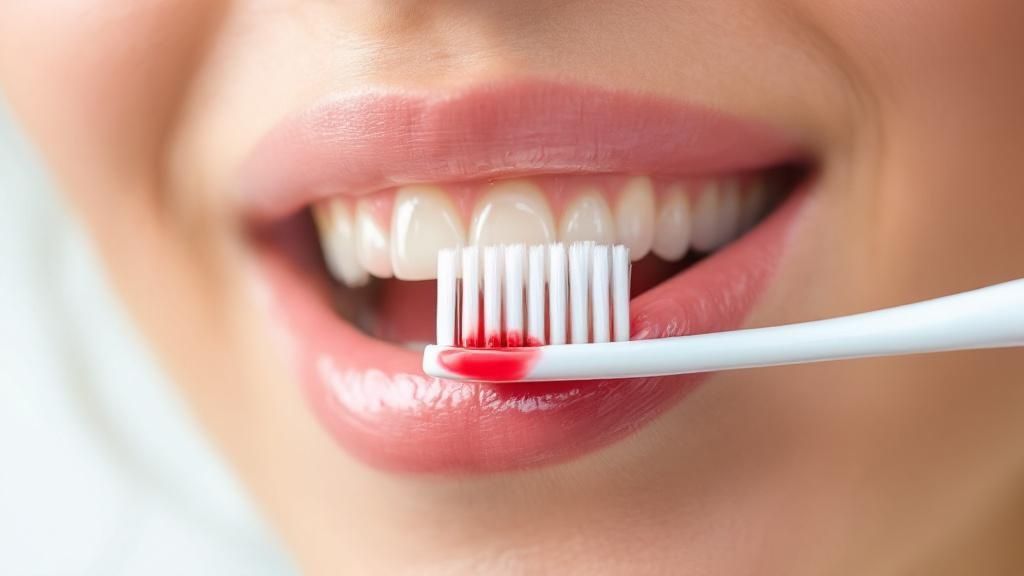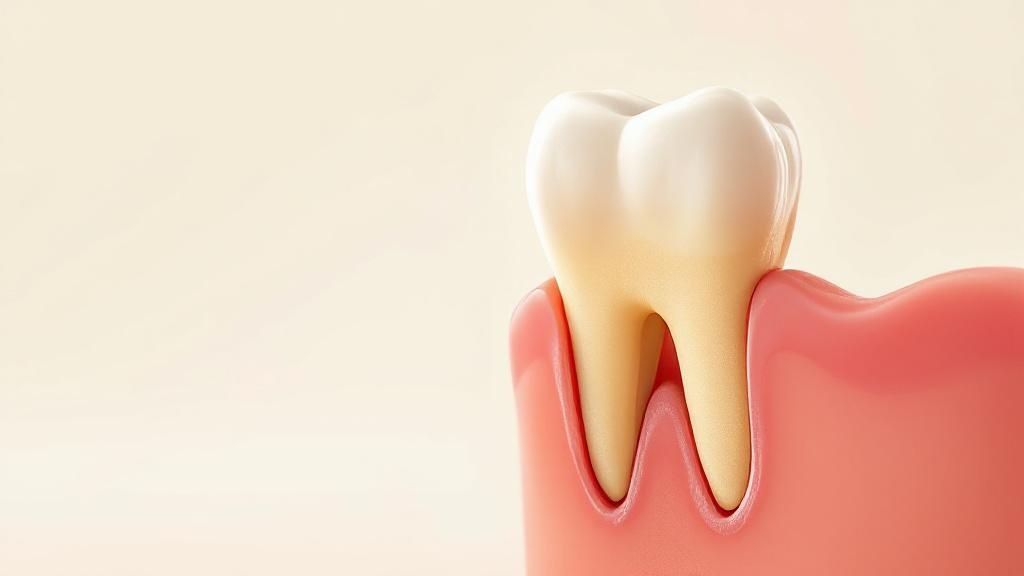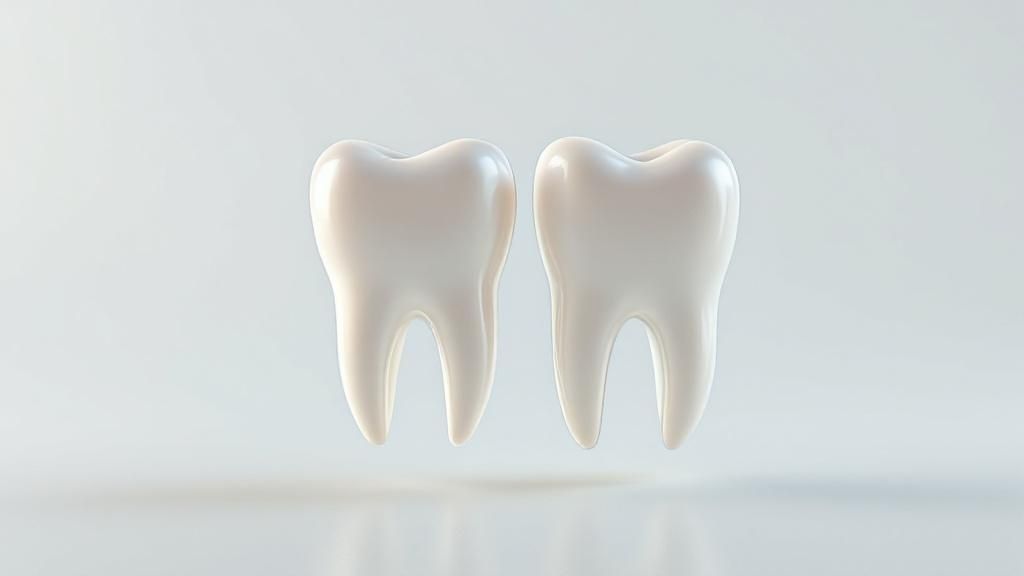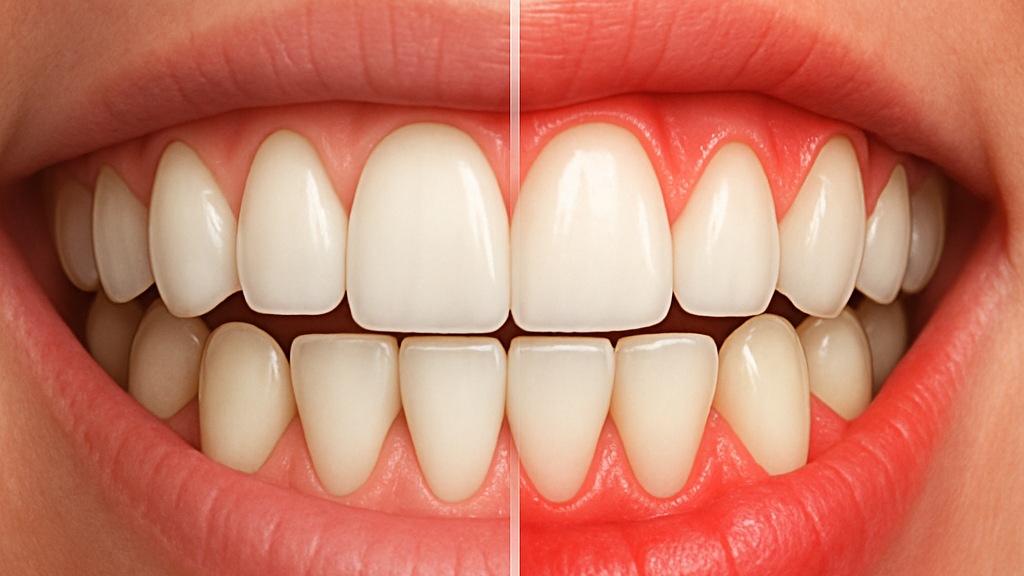Taking care of your oral health is a vital part of your overall well-being. Yet, it’s easy to overlook the subtle whispers from your gums telling you something isn’t quite right. Many Wellingtonians lead busy lives, and it’s common to dismiss a little pink on your toothbrush as normal. But what if it’s one of the early signs of gum disease?
Gum disease, also known as periodontal disease, is incredibly common, but it’s also highly preventable and treatable, especially when caught early. The first and most important step is knowing what to look for. At City Dentists, our caring team believes in empowering our Wellington community with clear, straightforward knowledge. We want you to feel confident, not anxious, about your dental health.
This guide is designed to walk you through the most common symptoms in a reassuring way. Think of it as a helpful conversation with a friendly local expert, helping you understand your body so you can take proactive steps. Our goal is to demystify these symptoms, reduce any fear you might have about visiting the dentist, and show you that modern, gentle care from an expert team is just around the corner, right here in the heart of Wellington.
1. Sign #1: Bleeding Gums – More Than Just a Minor Nuisance
Seeing a tinge of pink in the sink when you spit out your toothpaste, or a fleck of red on your dental floss, is an incredibly common experience. Because it’s so frequent, many of us brush it off as nothing to worry about, perhaps a result of brushing a little too vigorously. However, it’s important to know that healthy gums shouldn’t bleed. This is one of the earliest and most important signs of gum disease, specifically its initial stage, gingivitis.

Think of it as your body’s gentle alarm system. The bleeding is a direct response to inflammation caused by a build-up of bacterial plaque along your gumline. Recognising this symptom for what it truly is—a request for a little more attention from your gums—is the first step toward preventing a minor issue from becoming a more serious problem.
Where You Might Notice Bleeding
Bleeding gums can show up in several ways. You might not always see bright red blood; sometimes it’s more subtle. Pay attention to:
- Pink-tinged saliva after brushing your teeth.
- Reddish colouring on your toothbrush bristles.
- Small spots of blood left on your dental floss.
- Unexpected bleeding when you bite into firm foods like a crisp apple or crunchy carrot.
If you frequently notice blood when you brush or floss, it’s a key indicator that your gums are inflamed and need some care. For more guidance on this symptom, you can learn how to effectively stop bleeding gums.
Actionable Steps You Can Take at Home
The good news is that when caught early, gingivitis is often reversible with improved oral hygiene. The key is to be gentle but thorough.
Key Insight: Don’t avoid cleaning the areas that bleed. While it seems counterintuitive, gentle cleaning is precisely what’s needed to remove the plaque causing the inflammation, which allows the gums to heal.
- Soften Your Approach: Switch to a soft-bristled toothbrush. Aggressive scrubbing with hard bristles can damage sensitive gum tissue and won’t effectively remove plaque from hard-to-reach areas.
- Refine Your Technique: Use gentle, flicking or circular motions to massage your teeth and gumline rather than a harsh back-and-forth sawing motion.
- Soothe with Salt Water: A warm salt water rinse (half a teaspoon of salt in a glass of warm water) can help reduce inflammation and soothe discomfort.
- Stay Consistent: If you notice bleeding, it’s more important than ever to maintain a consistent routine of twice-daily brushing and daily flossing.
If your gums continue to bleed for more than a week or two despite these efforts, it’s a clear signal that you need professional care. Don’t worry. Booking a visit with one of our experienced hygienists at City Dentists is the best next step. We can provide a gentle, professional clean to remove stubborn plaque and tartar and give you personalised advice. Learn more about three effective ways to stop your gums from bleeding.
2. Sign #2: Red, Swollen, or Tender Gums – An Unmistakable Inflammatory Response
Healthy gums are typically a pale coral pink colour, firm to the touch, and fit snugly around your teeth. When you look in the mirror, if you notice that your gums appear bright red, purplish, or puffy and look like they’re bulging around your teeth, this is a clear sign of inflammation. This visible change is your body’s immune system reacting to the toxins released by bacterial plaque that has accumulated along the gumline.
This swelling and redness, often accompanied by tenderness, is a hallmark of gingivitis. Think of it like a swollen joint or an infected cut elsewhere on your body; it’s an active battleground where your body is trying to fight off infection. Acknowledging this symptom allows you to address the underlying issue before it can progress to more serious damage.
Where You Might Notice Redness & Swelling
This inflammation isn’t always painful at first, so it’s important to be visually aware of your gum health. You might notice:
- Visible redness along the line where your gums meet your teeth.
- A puffy or ‘rolled’ look to the edges of your gums, rather than a sharp, firm edge.
- Tenderness or discomfort when you brush, floss, or even touch your gums.
- Sensitivity when eating acidic foods like citrus fruits or spicy meals.
If you are seeing these changes, it’s a strong indicator that your gums are inflamed and need attention. To understand the causes more deeply, explore our guide on what unusually red gums may mean.
Actionable Steps You Can Take at Home
Addressing the inflammation promptly can help your gums return to a healthy state. The focus should be on reducing the bacterial load and soothing the irritated tissue.
Key Insight: Inflammation is a response to bacteria. Soothing the discomfort is helpful, but the ultimate goal is to remove the source of the problem: plaque. Gentle and consistent cleaning is the most effective long-term solution.
- Gentle Gum Massage: Using a clean finger, gently massage your gums in a circular motion for a few minutes each day. This can help improve blood circulation and reduce swelling.
- Avoid Irritants: Tobacco and alcohol are known to worsen gum inflammation. Reducing or eliminating them can significantly aid in the healing process.
- Boost Your Vitamin C: This essential vitamin plays a crucial role in collagen production, which is vital for maintaining healthy gum tissue. Incorporate more vitamin C-rich foods like kiwifruit, capsicum, and leafy greens into your diet.
If the redness, swelling, and tenderness persist for more than a week despite these home care efforts, professional help is the next step. Our caring team at City Dentists can provide a thorough yet gentle cleaning and create a personalised plan to get your gum health back on track.
3. Persistent Bad Breath (Halitosis)
We’ve all had moments of worrying about bad breath after a garlicky meal or a morning coffee. However, persistent bad breath, medically known as halitosis, that lingers all day despite brushing, flossing, and using mouthwash is a different matter entirely. This isn’t just about what you ate; it’s often one of the more telling signs of gum disease.

This chronic odour is caused by bacteria thriving in the small pockets that can form between your teeth and gums as the disease progresses. These bacteria release volatile sulfur compounds, which produce a distinct and unpleasant smell that can’t be masked by mints or gum. Recognising this as a symptom of an underlying issue is key to addressing its root cause.
Where You Might Notice Halitosis
Unlike temporary bad breath, gum disease-related halitosis is stubborn and pervasive. You might become aware of it through:
- A constant unpleasant taste in your mouth that resembles “morning breath” but doesn’t go away.
- Comments from family or friends about your breath, which can be an uncomfortable but important indicator.
- Noticing that mints, gum, or sprays only provide very temporary relief, with the bad odour returning quickly.
- A feeling that people are subtly keeping their distance when you speak to them.
If these scenarios feel familiar, it’s a strong sign that the problem goes deeper than surface-level oral hygiene. You can explore a detailed breakdown of the various causes of halitosis to better understand what might be happening.
Actionable Steps You Can Take at Home
While professional treatment is necessary to address the gum disease causing halitosis, you can take steps at home to manage the bacteria contributing to the odour.
Key Insight: Halitosis from gum disease isn’t a cleanliness issue; it’s a health issue. The odour comes from bacteria in inflamed gum pockets that regular brushing can’t always reach.
- Clean Your Tongue: A significant amount of oral bacteria resides on the surface of your tongue. Use a dedicated tongue scraper every day to gently remove this buildup.
- Stay Hydrated: A dry mouth creates a perfect environment for odour-causing bacteria to multiply. Drinking plenty of water throughout the day helps maintain saliva flow, which naturally cleanses your mouth.
- Rethink Your Diet: Beyond dental intervention, certain lifestyle changes can help alleviate symptoms like persistent bad breath. Learning about the life-changing benefits of cutting sugar can address a key factor contributing to oral bacterial overgrowth and associated halitosis.
- Chew Sugar-Free Gum: Chewing sugar-free gum containing xylitol after meals can stimulate saliva production and help neutralise acids.
If these measures don’t resolve the issue, it’s a clear sign you need professional intervention. A deep cleaning (scaling and root planing) performed by a skilled hygienist is often required to remove the bacterial deposits from below the gumline. Contact us at City Dentists to schedule a consultation and take the first step towards truly fresh breath.
4. Receding Gums – When Your Teeth Start to Look Longer
Have you ever looked in the mirror and thought your teeth seemed a bit longer than they used to? This isn’t your imagination, and it’s not a sign of your teeth growing. Instead, it’s a classic indicator of gum recession, a process where your gum tissue pulls back or wears away, exposing more of your tooth and, in some cases, the sensitive root surface. While aggressive brushing can contribute, gum recession is one of the more visually obvious signs of gum disease that has progressed.

This “long in the tooth” appearance happens because the bacterial toxins associated with periodontal disease are actively destroying the gum tissue and the underlying bone that supports your teeth. It’s a sign that the structural foundation of your smile is being compromised. Addressing it promptly is key to preventing further damage, increased sensitivity, and potential tooth loss.
Where You Might Notice Recession
Gum recession can be subtle at first, but it becomes more apparent over time. Look out for these tell-tale signs:
- A “longer” appearance of one or more teeth.
- Notches or dents you can feel with your tongue near the gumline.
- Increased sensitivity to hot, cold, or sweet foods and drinks as the root surface becomes exposed.
- Your dentist or hygienist noting deeper “pockets” around your teeth during a check-up.
Recognising these changes early allows for more effective intervention. You can learn more about the causes of gum recession and what you can do about it.
Actionable Steps You Can Take at Home
While you can’t make receded gums grow back, you can take steps to manage the symptoms and prevent the problem from worsening.
Key Insight: The primary goal is to address the cause of the inflammation and protect the newly exposed, sensitive tooth surfaces from further damage and decay.
- Be Gentle: Immediately switch to an extra-soft bristled toothbrush and use gentle, flicking or circular massaging motions. Harsh scrubbing will only accelerate the recession.
- Manage Sensitivity: Use a desensitising toothpaste specifically formulated for sensitive teeth. These contain compounds that help block the pathways to the nerves in your teeth.
- Avoid Irritants: Whitening products and highly acidic foods can sometimes aggravate sensitivity on exposed root surfaces. Consider reducing your intake while you get the issue under control.
- Strengthen Your Roots: Ask your dentist about using a prescription-strength fluoride gel at home to help strengthen the exposed root surfaces and make them more resistant to decay.
If you’ve noticed your gums are receding, it’s a clear signal that you need a professional assessment. Our City Dentists team can accurately measure the extent of the recession, provide a thorough cleaning to halt its progression, and discuss personalised treatment options with you. Booking a consultation is the definitive step toward protecting your smile.
5. Sign #5: Loose or Shifting Teeth – A Serious Call for Help
If you’ve noticed a tooth feels slightly wobbly when you bite down, or that new gaps are appearing between your teeth, this is a major warning sign. Unlike the subtle symptoms of early gingivitis, loose or shifting teeth indicate that gum disease has likely progressed to its more advanced and destructive stage: periodontitis. This is not a symptom to watch and wait on; it demands immediate professional attention.
This loosening happens because the chronic infection is no longer just affecting your gums. It has begun to attack and destroy the underlying bone and tissues that anchor your teeth firmly in place. As this support structure is lost, teeth lose their stability, which can cause significant changes to your bite and smile.
How You Might Notice Tooth Mobility
Changes in tooth position or stability can be subtle at first, but become more obvious over time. Pay close attention if you experience any of the following:
- Changes in your bite: You might feel that your top and bottom teeth don’t fit together in the same way they used to.
- New or widening gaps: Noticeable spaces may appear between teeth, particularly the front ones, which can sometimes “fan out”.
- Movement while eating: You might feel a tooth move when biting into something moderately firm, like a sandwich or a piece of fruit.
- A different fit for dental work: If you have a partial denture or retainer, it may suddenly feel ill-fitting or uncomfortable.
Recognising these changes as potential signs of gum disease is critical. The structural damage causing teeth to loosen is often irreversible without professional treatment, and ignoring it can lead to tooth loss. You can explore the significant consequences of losing a tooth on citydentists.co.nz to understand why prompt action is so important.
Actionable Steps You Must Take
At this stage, home care alone is not enough to stop the progression of the disease. Professional intervention is essential to save your teeth. However, you can take steps to prevent further damage while you await your appointment.
Key Insight: Don’t repeatedly wiggle a loose tooth to “test” its mobility. This can further damage the already weakened ligaments and bone holding it in place, potentially worsening the situation.
- Seek Immediate Care: This is the most crucial step. You need a comprehensive periodontal evaluation to determine the extent of the bone loss and create a treatment plan.
- Be Gentle with the Area: Avoid chewing hard or crunchy foods on the affected teeth to minimise stress on them.
- Maintain Meticulous Hygiene: While you can’t reverse bone loss at home, you can help control the bacterial infection. Continue with gentle but thorough brushing and flossing to remove plaque and prevent the condition from escalating.
- Discuss Contributing Factors: Talk to your dentist about other potential issues, such as teeth grinding (bruxism), which can accelerate tooth mobility when gum disease is present.
If you are experiencing any degree of tooth looseness, please don’t delay. Contacting City Dentists for an urgent consultation is the best way to protect your oral health. Our experienced team can assess the damage and discuss the necessary treatments to halt the disease and save your smile.
6. Sign #6: Painful Chewing – When Eating Becomes an Ordeal
If biting into your favourite foods now sends a jolt of discomfort through your jaw, it’s a significant warning sign that shouldn’t be ignored. While tooth sensitivity can have many causes, persistent pain specifically when you chew often points to a problem beneath the gumline. This is one of the more advanced signs of gum disease, indicating the infection may have spread deeper into the tissues that support your teeth.
When bacteria from plaque and tartar work their way below the gums, they create inflammation and infection around the tooth roots and the ligaments holding them in place. The pressure from chewing on these inflamed tissues is what causes the pain. It’s a clear signal that the underlying structures of your teeth are under attack and need immediate professional attention to prevent further damage.
How Painful Chewing Might Manifest
Discomfort during meals isn’t always a sharp, sudden pain. It can be a dull ache that builds or a specific sensitivity you try to avoid. Be aware of these common scenarios:
- A dull, persistent ache when you bite down on anything, even softer foods.
- Sharp pain when eating crunchy or hard foods like crusty bread, nuts, or raw vegetables.
- Subconsciously avoiding one side of your mouth to prevent discomfort.
- A tendency to switch to softer foods like soups, yoghurt, and smoothies to make eating more tolerable.
If mealtime has become a source of anxiety or discomfort, it’s a critical sign your oral health is compromised. This symptom suggests that gum disease is progressing from gingivitis to the more serious stage of periodontitis.
Actionable Steps You Can Take at Home
While these home care strategies can provide temporary relief, they are not a substitute for professional diagnosis and treatment. The primary goal is to manage discomfort until you can see a dentist.
Key Insight: Painful chewing is a sign that the infection has likely progressed beyond what home care alone can resolve. It indicates a problem with the tooth’s supporting structures, which requires urgent professional evaluation.
- Modify Your Diet: Temporarily stick to soft, nutritious foods that require minimal chewing. This reduces pressure on the affected areas. Think scrambled eggs, mashed potatoes, and protein shakes.
- Rinse for Relief: Gently rinsing your mouth with a warm salt water solution (half a teaspoon of salt in a glass of warm water) before and after meals can help soothe inflammation and cleanse the area.
- Use a Cold Compress: If the pain is acute, applying a cold compress to the outside of your cheek for 15-20 minutes can help reduce swelling and numb the discomfort.
- Manage Pain Carefully: Over-the-counter pain relievers like paracetamol or ibuprofen can provide temporary relief, but always follow the package directions and consult your pharmacist if you have other health conditions.
Pain while eating is your body’s urgent request for help. This is not a “wait and see” symptom. The team at City Dentists is here to help you get out of pain and address the root cause. We encourage you to book an appointment with us promptly so we can assess the situation and create a treatment plan to protect your teeth and restore your oral health.
Signs of Gum Disease: Key Symptom Comparison
| Condition | Implementation Complexity | Resource Requirements | Expected Outcomes | Ideal Use Cases | Key Advantages |
|---|---|---|---|---|---|
| Bleeding Gums | Low – simple hygiene adjustments | Basic oral hygiene tools | Early detection and reversal of gum issues | Early-stage gum disease detection | Non-invasive, easily noticeable early warning |
| Red, Swollen, or Tender Gums | Moderate – may need mouthwash and professional cleaning | Oral care products, possible dental visit | Reduction of inflammation and infection control | Active gingivitis monitoring and management | Highly visible sign, responsive to treatment |
| Persistent Bad Breath | Moderate – daily tongue cleaning and mouthwash | Specialized mouthwash, dental visits | Noticeable breath improvement with treatment | Chronic halitosis linked to gum disease | Motivates treatment seeking, measurable progress |
| Receding Gums | High – may require surgical treatment | Professional interventions, special products | Stabilization or improvement of gum recession | Advanced gum disease monitoring and treatment | Clear visual evidence, can be monitored over time |
| Loose or Shifting Teeth | Very high – multidisciplinary dental care needed | Periodontist, prosthodontist, extensive treatment | Stabilization or tooth loss prevention | Advanced periodontitis with structural damage | Urgent indicator requiring prompt action |
| Painful Chewing | High – urgent dental evaluation | Pain management, dental treatment | Pain relief and improved chewing function | Severe inflammation affecting eating | Strong motivator for immediate professional care |
Your Next Step to Healthy Gums with City Dentists
Recognising the early signs of gum disease is your first and most powerful step toward protecting your long-term health. The signals your body sends, from bleeding gums during brushing to persistent bad breath or tender, swollen tissues, are not meant to cause alarm. Instead, they are crucial alerts, encouraging you to take proactive measures before a minor issue develops into something more serious.
Viewing these signs as a call to action puts you in control. The journey from noticing a symptom like receding gums or painful chewing to seeking professional advice is the most important one you can take for your oral wellbeing. Ignoring these warnings can unfortunately lead to more complex problems, such as damage to the bone supporting your teeth and even tooth loss. However, the positive news is that when identified early, gum disease is highly treatable and often entirely reversible.
A Partnership for Your Oral Health
At City Dentists, we understand that confronting potential dental issues can feel daunting. Our team is dedicated to creating a supportive, judgement-free environment where you can feel comfortable and confident in your care. We believe in being your partner in health, which means we take the time to listen to your concerns, explain our findings in clear, simple terms, and work with you to develop a personalised treatment plan.
Our Commitment: We prioritise your comfort and wellbeing. By using proven, gentle techniques and focusing on patient-centred care, we aim to make every visit a positive and reassuring experience, helping to alleviate any dental anxiety you may have.
The path to healthy gums begins with a simple conversation and a professional assessment. Whether you require a thorough hygiene appointment to remove plaque and tartar buildup or a more specialised deep cleaning treatment for advanced symptoms, our skilled team is here to help. We are conveniently located in the heart of Wellington, just a short walk from the train station and Lambton Quay bus hub, making it easy for busy professionals, students, and residents to access exceptional dental care. Don’t let uncertainty hold you back from a healthier, more confident smile. Your gums have sent the message; now is the perfect time to listen.
Ready to take control of your gum health? The friendly, expert team at City Dentists is here to provide the compassionate care and effective treatment you need. Book your appointment online or call us today to start your journey back to healthy gums.

